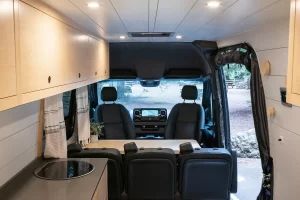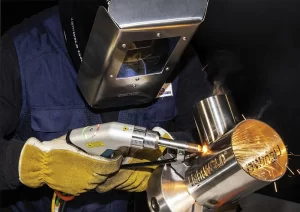Embarking on camper van necessitates meticulous attention to safety features in conversions. Compliance is crucial, but ensuring health and safety is a fundamental obligation.
Our exploration of ‘Safety Synergy’ delves into the intricate tapestry of safety considerations. By dissecting health and safety features’ synergies, we unveil mechanisms fortifying overall safety. Join us to navigate safety features’ labyrinth, shedding light on critical components safeguarding adventurers’ well-being.
Key Takeaways
- Implementing crash-tested seating systems and reinforced structures enhances occupant protection in camper van conversions.
- Equipping with fire suppression systems, smoke detectors, and fire-resistant materials significantly improves fire safety in camper van conversions.
- Maintaining proper ventilation systems and emergency exits is crucial for ensuring air quality and emergency preparedness in camper van conversions.
- Complying with regulatory standards such as NHTSA, RVIA, SAE, and ANSI is essential to uphold safety benchmarks in camper van conversions.
Understanding Safety Features
In the realm of camper van design and construction, a comprehensive grasp of safety features is essential for ensuring optimal security and protection during travel. Safety features in camper van conversions play a crucial role in safeguarding occupants, preventing accidents, and mitigating risks. Understanding the various safety components integrated into camper van designs is fundamental to creating a secure travel environment.
One key safety feature in camper van conversions is the installation of crash-tested seating systems. These systems are designed to provide structural support and enhance occupant protection in the event of a collision. Additionally, the inclusion of fire suppression systems can help mitigate fire-related hazards, offering a proactive approach to safety.
Moreover, advanced safety technologies such as electronic stability control, lane departure warning systems, and rear-view cameras are becoming increasingly prevalent in modern camper van conversions. These technologies enhance driver awareness and assist in accident prevention, contributing to overall road safety.
Importance of Safety in Conversions
The foundational understanding of safety features in camper van conversions underscores the critical significance of prioritizing security measures to ensure comprehensive protection for occupants during travel. Ensuring safety in conversions is paramount for a seamless and secure journey. Consider the following points to grasp the importance of safety in conversions:
- Preventive Measures: Implementing safety features like smoke detectors, fire extinguishers, and carbon monoxide detectors can help prevent accidents and ensure early detection of potential hazards.
- Regular maintenance checks and inspections can significantly reduce the risk of malfunctions in essential safety equipment.
- Emergency Preparedness: Equipping the camper van with a first aid kit, emergency contact information, and an emergency escape plan can mitigate risks and enhance preparedness for unforeseen circumstances.
- Conducting safety drills with all occupants to practice emergency procedures can increase response efficiency and readiness in critical situations.
Comparison of Health and Safety Features
Analyzing the efficacy of health and safety features in camper van conversions reveals crucial insights into enhancing occupant protection and well-being. When comparing health and safety features in camper van conversions, it is essential to consider factors such as crashworthiness, fire safety measures, ventilation systems, and emergency exits.

Crashworthiness, including the structural integrity of the van and the presence of airbags, plays a significant role in protecting occupants in the event of a collision.
Fire safety features such as smoke detectors, fire extinguishers, and flame-resistant materials are vital for preventing and mitigating fire hazards within the confined space of a camper van.
Adequate ventilation systems, such as windows, vents, and fans, are crucial for maintaining air quality and preventing the buildup of harmful gases.
Additionally, the presence of emergency exits, such as secondary doors or roof hatches, can be life-saving in emergency situations.
Integrating Safety Synergy
Integrating health and safety features in camper van conversions requires a harmonious blend of crashworthiness, fire safety measures, ventilation systems, and emergency exits to establish a comprehensive safety synergy. To achieve this, the following key points should be considered:
- Crashworthiness:
- Incorporating reinforced structures to withstand impact forces.
- Installing airbags and seatbelts to mitigate injuries during collisions.
- Fire Safety Measures:
- Equipping the camper van with smoke detectors and fire extinguishers.
- Using fire-resistant materials in construction to reduce the spread of flames.
Evaluating Safety Standards
When assessing safety standards in camper van conversions, a meticulous examination of regulatory requirements and industry benchmarks is essential. Compliance with established regulations such as the National Highway Traffic Safety Administration (NHTSA) standards and the Recreational Vehicle Industry Association (RVIA) guidelines ensures that camper van conversions meet basic safety criteria. These regulations cover aspects such as seatbelt installation, fire safety measures, electrical systems, and structural integrity.
Beyond regulatory requirements, industry benchmarks set by organizations like the Society of Automotive Engineers (SAE) and the American National Standards Institute (ANSI) provide additional guidance on best practices for camper van safety. These benchmarks often address specific components such as gas systems, ventilation, and emergency exits, aiming to enhance the overall safety of the conversion.
Enhancing Safety Measures
To bolster camper van safety, advancements in technology and design play a pivotal role in fortifying protective measures for occupants.
- Enhanced Collision Detection Systems
- Utilization of radar and cameras for real-time monitoring.
- Integration with automatic braking systems for timely response to potential collisions.
- Improved Structural Integrity
- Employment of high-strength materials in camper van construction.
- Incorporation of impact-absorbing designs to minimize injuries during accidents.
These advancements work together to create a safer environment for individuals utilizing camper vans. By combining cutting-edge technology with robust design principles, safety measures are significantly enhanced, providing occupants with peace of mind and reducing the risk of potential harm.
It is crucial for manufacturers and converters to prioritize safety features in their designs continually, ensuring that camper van conversions adhere to the highest standards of safety and protection.
Frequently Asked Questions
Are There Any Specific Safety Features That Are Commonly Overlooked in Camper Van Conversions?
In camper van conversions, often overlooked safety features include proper ventilation systems, carbon monoxide detectors, fire extinguishers, and emergency exits. Addressing these elements ensures a safer and more secure environment for occupants during their travels.
How Do Safety Standards Differ Between DIY Camper Van Conversions and Professionally Converted Camper Vans?
Safety standards in DIY camper van conversions often vary due to individual skills and knowledge gaps. Professionally converted camper vans adhere to industry regulations, ensuring consistency in safety features like structural integrity, electrical systems, and fire prevention measures.
What Are Some Innovative Ways to Enhance Safety Measures in Camper Van Conversions?
Innovative safety enhancements in camper van conversions include advanced monitoring systems, reinforced structural components, and fire suppression technology. Integration of smart sensors for real-time data collection and automated emergency response mechanisms can further elevate safety standards in these conversions.
How Can Owners Ensure That Their Camper Van Conversions Meet or Exceed Industry Safety Standards?
To ensure camper van conversions meet or surpass industry safety standards, owners must rigorously adhere to manufacturer guidelines for installations, regularly inspect all safety features, engage certified professionals for modifications, and prioritize quality materials over cost-efficiency in the conversion process.
Are There Any Unique Health and Safety Considerations to Keep in Mind When Converting a Camper Van for Long-Term Living or Travel?
When converting a camper van for long-term living or travel, unique health and safety considerations include proper ventilation, fire safety measures, secure electrical systems, and ergonomic design to prevent accidents and promote well-being during extended periods of use.
Conclusion
In conclusion, the analysis of health and safety features in camper van conversions underscores the critical importance of prioritizing safety in such endeavors. By comparing and evaluating these features, a comprehensive understanding of safety synergies emerges, highlighting the essential components that contribute to the overall safety profile of conversions. Enhancing safety measures and adhering to safety standards are paramount in ensuring the well-being of individuals engaging in camper van conversions.
You May Also Like:



